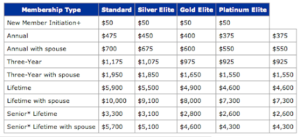
"Explore the comprehensive guide to fabrikanlage, covering its history, types, components, design, technological integration, sustainability
Introduction to Fabrikanlage
When we hear the term “fabrikanlage,” it might seem a bit foreign, but it’s essentially the backbone of modern industry. So, what exactly is a fabrikanlage? In simple terms, it refers to an industrial plant or factory setup where goods are manufactured, assembled, or processed. This concept is central to the manufacturing sector, impacting everything from production efficiency to economic growth.
Historical Background
Evolution of Fabrikanlage
The journey of fabrikanlage dates back to the early industrial revolution when manual labor started giving way to mechanized processes. Factories began to spring up, transforming raw materials into finished products at an unprecedented scale. Over time, advancements in technology have continuously reshaped these industrial plants, making them more efficient and productive.
Key Milestones in Industrial Development
From the advent of the steam engine to the rise of automation, each technological breakthrough has marked a significant milestone in the evolution of fabrikanlage. The introduction of assembly lines by Henry Ford revolutionized mass production, while the digital age has ushered in the era of smart factories.
Types of Fabrikanlage
Manufacturing Plants
These are the most common types of fabrikanlage, where raw materials are converted into finished goods. They encompass a wide range of industries, from automotive to electronics.
Assembly Plants
In assembly plants, components and parts are put together to form a final product. This type of fabrikanlage is often seen in the automotive industry, where different parts of a vehicle are assembled into a complete unit.
Processing Plants
Processing plants handle the transformation of raw materials into intermediate products or consumables. Examples include food processing plants and chemical refineries.
Components of a Fabrikanlage
Infrastructure
The physical structure of a fabrikanlage includes buildings, storage areas, and transportation facilities. A well-designed infrastructure is crucial for smooth operations.
Machinery and Equipment
The heart of any fabrikanlage lies in its machinery and equipment. From conveyor belts to CNC machines, the type of equipment used can significantly affect production efficiency.
Human Resources
Despite the rise of automation, human resources remain a vital component of any fabrikanlage. Skilled workers and engineers ensure the smooth operation and maintenance of machinery.
Design and Layout
Principles of Plant Layout
A well-thought-out plant layout optimizes space utilization and minimizes material handling. Key principles include the systematic arrangement of machinery and efficient workflow design.
Optimizing Workflow
Optimizing workflow involves streamlining processes to reduce downtime and increase productivity. Techniques such as value stream mapping can help identify and eliminate bottlenecks.
Safety Considerations
Safety is paramount in any fabrikanlage. Proper safety measures, including emergency exits, fire safety equipment, and regular drills, are essential to protect workers and equipment.
Technological Integration
Automation and Robotics
Automation and robotics have revolutionized fabrikanlage operations. Robots can perform repetitive tasks with high precision, reducing human error and increasing efficiency.
Industry 4.0 and Smart Factories
The fourth industrial revolution, or Industry 4.0, has brought smart factories into the limelight. These factories leverage advanced technologies like artificial intelligence and machine learning to optimize production processes.
Internet of Things (IoT) in Fabrikanlage
IoT technology enables interconnected devices to communicate and share data. In a fabrikanlage, IoT can monitor equipment health, track inventory levels, and predict maintenance needs.
Sustainability in Fabrikanlage
Energy Efficiency
Improving energy efficiency reduces operational costs and minimizes environmental impact. Techniques include using energy-efficient machinery and harnessing renewable energy sources.
Waste Management
Effective waste management practices are essential for sustainable fabrikanlage operations. This includes recycling, reducing waste production, and proper disposal of hazardous materials.
Green Building Practices
Green building practices involve constructing fabrikanlage with environmentally friendly materials and designs. This not only reduces the carbon footprint but also creates a healthier work environment.
Challenges in Fabrikanlage Management
Operational Challenges
Managing a fabrikanlage involves numerous operational challenges, from maintaining equipment to ensuring a consistent supply of raw materials. Effective management strategies are crucial for overcoming these hurdles.
Financial Challenges
Financial management in a fabrikanlage includes budgeting, cost control, and investment in new technologies. Balancing these aspects can be challenging but is essential for long-term success.
Environmental Challenges
Fabrikanlage operations can have significant environmental impacts. Adhering to environmental regulations and adopting sustainable practices can mitigate these effects.
Case Studies
Successful Fabrikanlage Implementations
Examining successful fabrikanlage implementations provides valuable insights into best practices. For instance, Toyota’s lean manufacturing approach has been widely adopted across various industries.
Lessons Learned from Failures
Analyzing failures can also offer important lessons. Understanding the causes of failures, such as poor management or inadequate planning, can help avoid similar pitfalls in the future.
Future Trends in Fabrikanlage
Emerging Technologies
Technological advancements continue to shape the future of fabrikanlage. Innovations such as 3D printing and blockchain technology are poised to revolutionize manufacturing processes.
Globalization and Its Impact
Globalization has interconnected markets and supply chains, presenting both opportunities and challenges for fabrikanlage operations. Adapting to global trends is essential for staying competitive.
Future Workforce Requirements
The future workforce in fabrikanlage will need a blend of technical and soft skills. Continuous training and development programs will be crucial for preparing workers for evolving industry demands.
Regulatory and Compliance Issues
International Standards
Adhering to international standards ensures that fabrikanlage operations meet global quality and safety benchmarks. This includes ISO certifications and other industry-specific standards.
Local Regulations
Compliance with local regulations is equally important. These regulations can vary significantly across regions and must be carefully navigated to avoid legal issues.
Role of Fabrikanlage in the Supply Chain
Importance in Manufacturing Processes
Fabrikanlage plays a critical role in the manufacturing supply chain, serving as the primary site for transforming raw materials into finished products.
Integration with Suppliers and Distributors
Effective integration with suppliers and distributors ensures a seamless flow of materials and products, reducing lead times and enhancing overall supply chain efficiency.
Economic Impact
Contribution to GDP
Fabrikanlage significantly contributes to a country’s GDP by driving industrial output and creating employment opportunities.
Job Creation
The establishment of fabrikanlage generates jobs, both directly within the plant and indirectly through associated industries and services.
Best Practices for Managing a Fabrikanlage
Lean Manufacturing
Lean manufacturing focuses on minimizing waste while maximizing productivity. Techniques such as just-in-time production can enhance efficiency.
Six Sigma
Six Sigma methodology aims to improve quality by identifying and eliminating defects in manufacturing processes.
Continuous Improvement
Adopting a culture of continuous improvement ensures that fabrikanlage operations remain competitive and efficient over time.
Conclusion
In conclusion, fabrikanlage is a cornerstone of modern industry, driving economic growth and technological advancement. By understanding its various aspects, from design and layout to technological integration and sustainability, we can optimize its operations for a better future.
FAQs
- What is the primary function of a fabrikanlage?
- The primary function of a fabrikanlage is to manufacture, assemble, or process goods.
- How does automation impact fabrikanlage operations?
- Automation increases efficiency and precision in fabrikanlage operations, reducing human error and operational costs.
- What are some sustainability practices in fabrikanlage?
- Sustainability practices include energy efficiency, waste management, and green building practices.
- What challenges do fabrikanlage managers face?
- Managers face operational, financial, and environmental challenges in running a fabrikanlage.
- What is the future outlook for fabrikanlage?
- The future outlook includes the adoption of emerging technologies, adapting to globalization, and evolving workforce requirements.
Read More:





